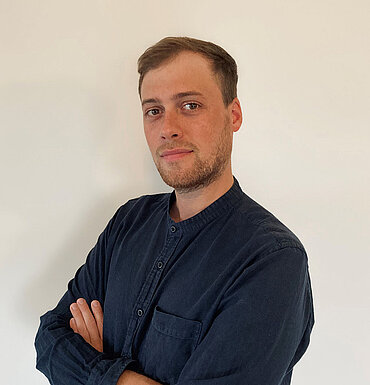A new research team specialized in RNA maturation
Clément Charenton, who was temporarily welcomed in Albert Weixlbaumer's team, is starting his own research team at the IGBMC in the Department of Integrative Structural Biology. The objective of the latter is to shed light on the understanding of the maturation stage of messenger RNAs through approaches combining biochemistry, biophysics and structural biology.

Shedding light on the processes of the messenger RNA maturation stage
A multidisciplinary researcher, trained in biochemistry and structural biology, Clément Charenton is interested in the maturation process of messenger RNA (mRNA). A molecule resulting from the transcription step, mRNA is an essential vector for protecting information as well as a crucial step for adapting the sequence in order to produce specific proteins. With his team, Clément Charenton plans to study the mechanisms of the molecular machines that modify the properties of mRNAs: stability, translatability as well as the genetic information contained.
The maturation of mRNA, located between transcription and translation, usually takes place in the nucleus. It prepares the pre-mRNA to become a mature mRNA, translatable into protein. Credit: Clément Charenton, IGBMC
The spliceosome, the protein machine that produces 10 times more different proteins than there are protein-coding genes
The first molecular machine studied by the team is the "spliceosome". This enzyme is involved in the stage after the production of the messenger RNA molecule: splicing. This step consists in keeping only the sequences necessary for the production of protein.
Thus, the spliceosome will eliminate the introns, non-coding elements, and keep only the exons, coding elements. A complex machine, composed of dozens of proteins and several RNAs, it is able to adapt its specificity to different cell types or various signals. Thus, the excised part for a given mRNA can vary, allowing different proteins to be produced from the same gene.
This phenomenon of "alternative splicing" is an extremely precise process, an error meaning the production of aberrant mRNAs coding for toxic proteins. One of the first steps of the team's project is to isolate the human spliceosome when it recognizes the sequences to be eliminated in order to study its chemical composition and structure.
Several positions (thesis, postdoc) will soon be available in the framework of this project. Biochemists/structural biologists interested in the structure and function of large protein/RNA assemblies can contact Clément Charenton directly.
Clément Charenton, multidisciplinary researcher specialized in biochemistry and structural biology
Clément Charenton is a biochemist and structural biologist studying the metabolism of eukaryotic RNA. During his PhD at École Polytechnique under the supervision of Marc Graille, he explored the molecular mechanisms of degradation of the protective cap of messenger RNA. He then joined Kiyoshi Nagai's team at MRC-LMB (Cambridge UK), for a postdoctoral fellowship on the mechanisms of RNA splicing by the spliceosome. In February 2021, he joins the CNRS as a research fellow at the IGBMC.
2022 was a very good year for the research of Clément Charenton, who received an ATIP-Avenir grant, became a laureate of the Claude Paoletti prize and obtained an ERC Starter.
